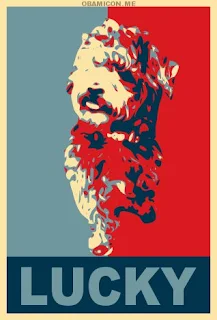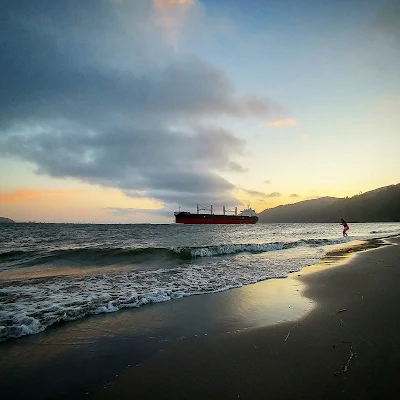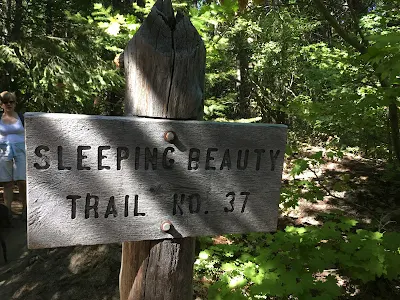When I run, the world grows quiet.
“It must feel good to be so close to achieving your goal,” Amy said.
I was wary rather than excited and tired from working the night before. Instead I stared out the window at the storm clouds growing over the Oregon coast as we drove south to Newport.
My goal was as simple as it was arbitrary. (See my earlier post On Running, Run On) I wanted to run four half marathons in one year before I turned 50. Each half is 13.1 miles, 4x13.1=52.4 - so over 50 miles give or take a stumble.
Here we were driving to Newport to run the fourth and final half -- the Newport Resolution Run and Polar Bear Plunge. Out of shape from the sugar season, I wondered if I would even finish the race.
And if I did finish, what would come next?
What comes next after you achieve a goal?
When I set about this adventure, my plan was that this would be a last big hurrah for running. I love hiking and vowed to do more, perhaps as a substitute for these organized runs which can become expensive. Yet each run introduced us to new places and got us out of our rut of attending only local runs.
May 20th - Run on the River
Astoria’s Run on the River was a great way to start. I signed up as a walker so I wouldn’t get in the way of more experienced runners. The weather was perfect and I love the waterfront. I took off at the start running way too fast, passing most of the slower walkers. When my phone’s app told me my first mile time, I was stunned. I felt good and my pace was eight minutes a mile - I rarely ever run that fast. Nervous energy. Wow, I felt really good -- running without hills is great! In fact the first seven miles or so is absolute flat with great views along the riverfront to enjoy.
The flat running ended at the far East end of town, the course turns to the right, in and steeply uphill into the Alderbrook neighborhood. The real runners had flown by me long before I got to the first hill but mine wasn’t the only pace that slowed to crawl. I finished with cramps in my legs and a decent time of two hours 15 minutes. One down.
August 12 - The Bridge of the GodS Half Marathon
Growing up on the Columbia River, I have a strange desire to run or walk across all this magnificent river’s bridges some day. The Great Columbia Crossing is one of my favorite runs each year. The Bridge of the Gods at Cascade Locks is in the heart of the Columbia Gorge. We took our little camper down and spent the night in field in front of the school with other runners. This time I had Amy with me. In the morning we hopped on the shuttle bus and the driver asked us if we knew how to get across the bridge. The Bridge of the Gods is narrow and 99 years old. I couldn’t imagine driving across it in a school bus full of people. So I sat beside her and guided her across. “Have a blessed day,” the driver said, and we did.
We ran first across the metal grate bridge and then up onto forested roadways still charred from the previous summer’s devastating fires. Smoke from this summer’s fires was still in the air, smudging the August sun. It was great to meet Amy at the end.
October 21 - The Gorge Half Marathon
After the muted skies at Cascade Locks, the weather in Hood River was a postcard worthy sunny Autumn day. We took our camper down the night before, had a great visit with my nephew’s family in The Dalles. My mom got meet her new great-grandson. Amy and I curled up to watch another WSU football game on TV. My friend had warned me “the first two miles are all straight up hill, but after that it levels off and is good.” I was glad for the warning, as we climbed up from the river to the old scenic highway, the climb was psychologically defeating. Running with Amy I decided to care less about my time and more about enjoying the run. Fall colors and bright sunlight matched against blue skies. This run follows the old cliffside highway yielding picture-perfect views around every corner. The punishing climb at the start of the race pays off at the end, as the course is down hill or flat in its final miles. I finished with just short of my personal best time but feeling great.
Then came the sugar season - that period between October and New Years where one gluttonous and pastry filled holiday follows another. Baked goods, fancy dinners, candy and cookies. Busy days, excuses not to run. I told myself “I’m in shape, I just ran three half marathons!”
I was, as cartoonist Matt Inman would say, giving in to the Blerch -- that inner voice that gives you all the great reasons not to exercise, to quit or not even try.
I all but stopped running more than once a week and some weeks I didn’t run at all. I gained eight pounds. I forgot to ask for the right days off from work --so I had three 12 hours night shifts scheduled right before the final run.
January 5 - The Newport Resolution Run and Polar Bear Plunge
I had only visited Newport, Oregon a few times and really didn’t know the town. I had no idea where we would be running. Since we started on the jetty, I assumed a nice run along the harbor and maybe across that beautiful bridge. I figured it would be cold and wet, but I was prepared for that. I figured I would be very slow.
I had no idea.
Just a few miles into the run and the course veers up into the woods, narrow roads and muddy trails used by mountain bikes in better weather. I was still wearing my ultralight distance running shoes - no traction at all. I fell twice on steep and muddy trails and stopped to help other runners. Each run was 13.1 miles, but this one was much longer. The trail was well marked but I grew increasingly concerned that I was lost. My running app failed at the start so I had no idea how far I had run and there were no mile markers. I cursed every skipped training day and every cookie and cinnamon roll indulgence. I felt as fat and slow as the day I first started running. When the trail finally returned to pavement, and headed down out of the hills. I was mentally exhausted.
Yet as I saw the bridge and the waterfront, I knew my goal was in reach.
The end the race is 100 yards of sand dunes with a finish line at the beach and dip in the ocean. I fell again trying to get under a cable gate right before the dunes. Something about climbing the first sand dune froze the thigh muscle on my left leg. It wasn’t cramped, but it just wouldn’t work. I hobbled toward the finish line and didn’t stop, I hobbled toward the water. I didn’t jump in the storm-tossed surf -- I was worried that I would not be able to stand up.
Instead I stood waist deep in the water and let the waves crash over me.
What’s next
Ending like that, you would think I’d hang up my shoes for good -- but I like running, not so much for the races - which I’m never competitive - but the way it makes me feel. It is meditation in movement, a time to think and breath and turn off the world for a little while. It makes me feel like I have accomplished something each day I run.
Pursuing this goal -- running in these races -- was great and got me out of my rut and into the world in a new way, but what I realized is that it is the everyday running and training that I crave.
Run Every Day - the streak
“Streaking” in the running world is not what you remember from the 1970s (if you remember the 1970s). Streaking is running every day for a minimum of one mile. Most days you are likely to run more, but depending on time and weather and all the other excuses, someday a mile is all you are going to accomplish. The key is putting on your shoes every single day for at least that one mile. I started the day my new Reeboks arrived and have only missed a day or two. I plan to start my official streak on my 50th birthday next week.
My big goal is to run 500 miles - which is easy if I just aim for 10 miles each week. Somewhere along the way I want to get a streak going of 50 days of running or speed walking at least one mile.
I have learned that goals aren’t about finish lines. Goals are about how you change your thinking on the path to achieving them.
-30-







































